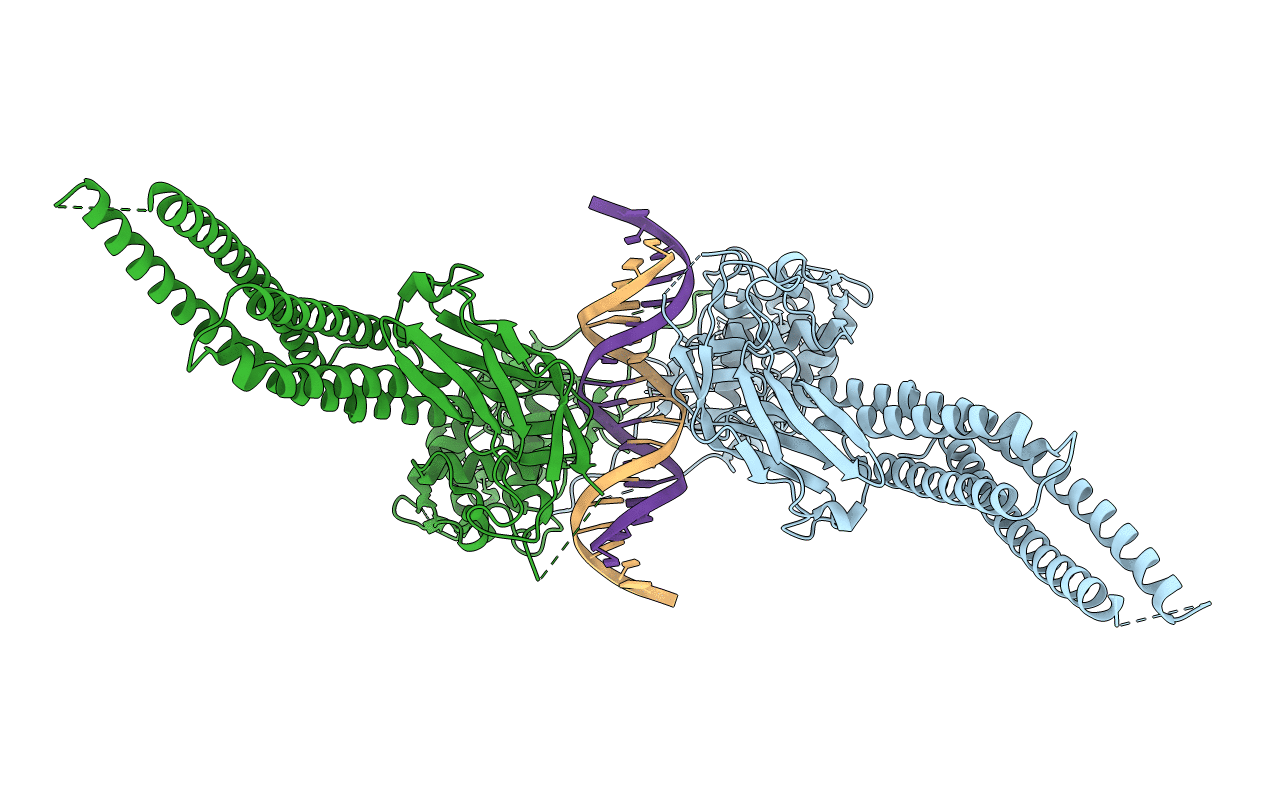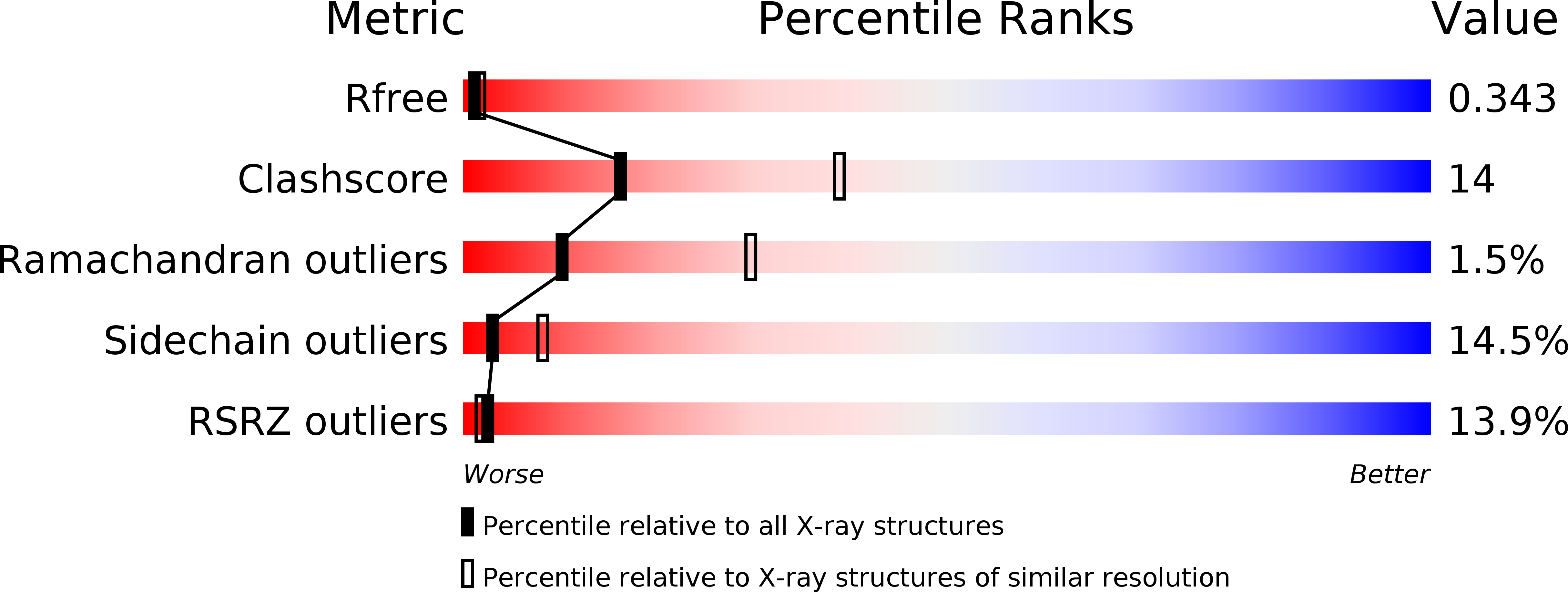
Deposition Date
2019-01-16
Release Date
2019-06-19
Last Version Date
2024-11-20
Entry Detail
PDB ID:
6QHD
Keywords:
Title:
Lysine acetylated and tyrosine phosphorylated STAT3 in a complex with DNA
Biological Source:
Source Organism:
Homo sapiens (Taxon ID: 9606)
Murine adenovirus 1 (Taxon ID: 10530)
Murine adenovirus 1 (Taxon ID: 10530)
Host Organism:
Method Details:
Experimental Method:
Resolution:
2.85 Å
R-Value Free:
0.34
R-Value Work:
0.29
R-Value Observed:
0.29
Space Group:
P 41


